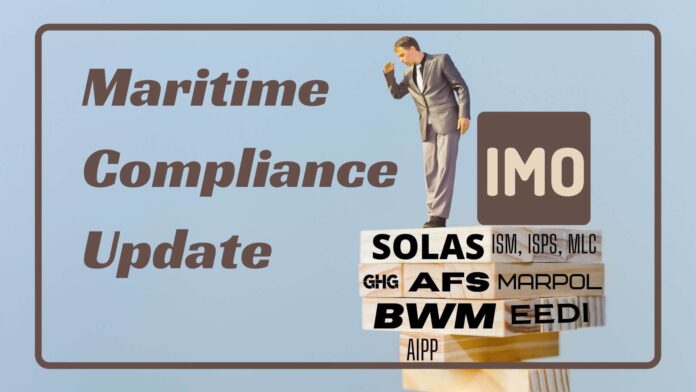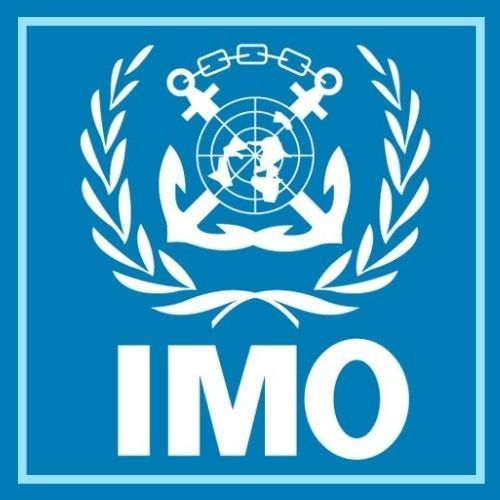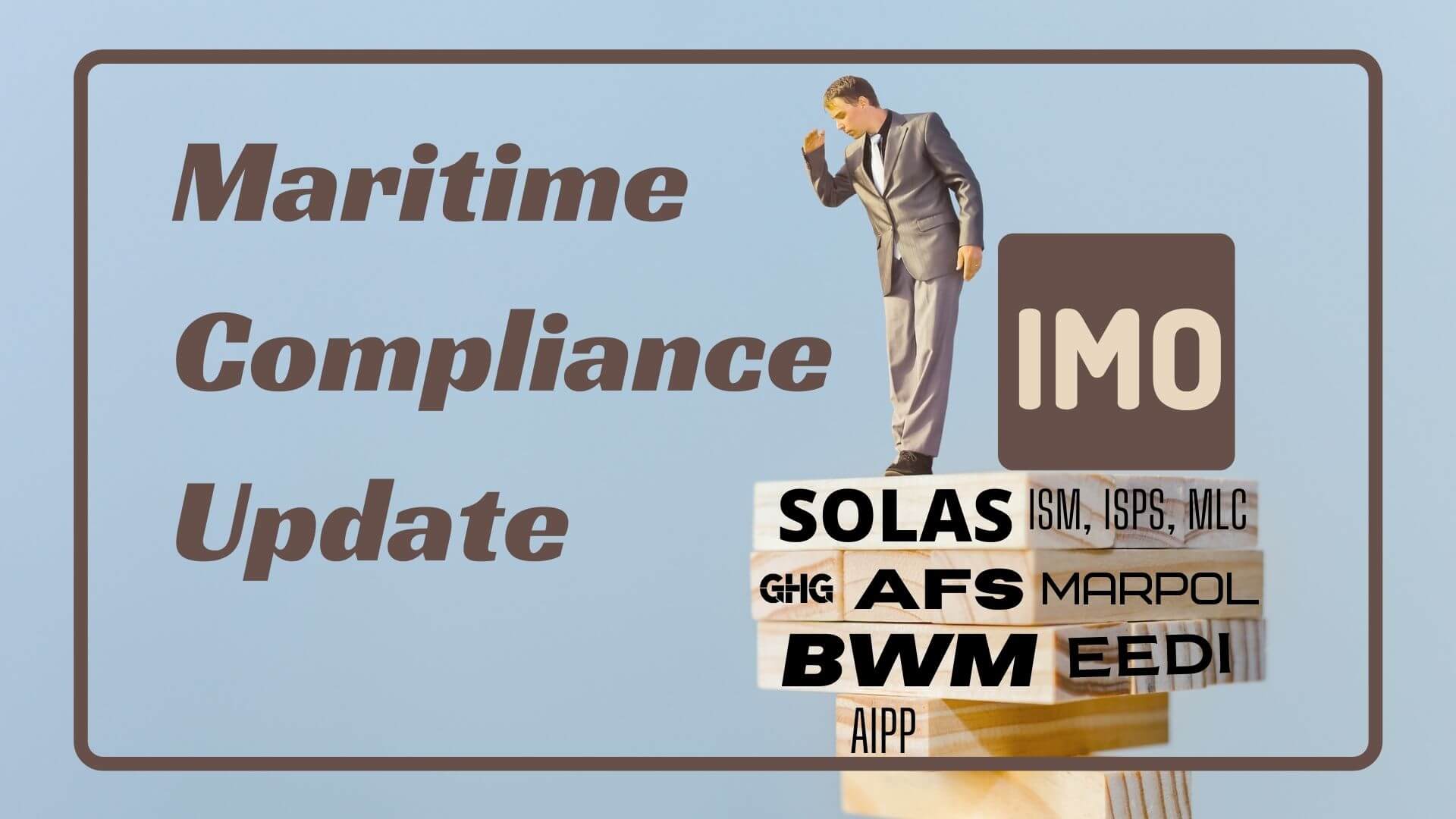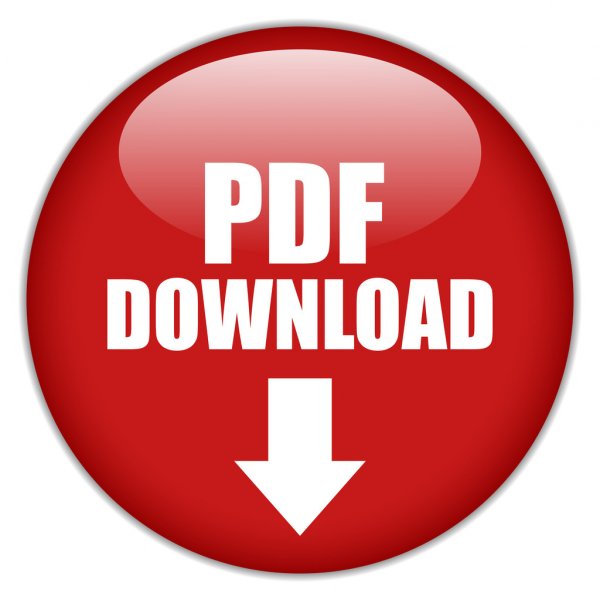
(www.MaritimeCyprus.com) The 9th session of the IMO Sub-Committee on Carriage of Cargoes and Containers (CCC 9) was held from 20 to 29 September 2023. CCC 9 continued work on interim guidelines for the use of ammonia and hydrogen as fuel, finalized amendments for the IGF Code, and discussed amendments to the IGC Code for gas carriers and the IMSBC and IMDG Codes on dangerous cargoes.
History of Ammonia as Fuel
Using ammonia as a fuel for internal combustion (IC) engines dates back to the early 1800s and saw a surge in use as an alternative fuel during World War II, when oil stockpiles became low. Despite this early start, limited research on IC and spark ignition engines using ammonia as fuel had been conducted until the 2010s.[1]
The utilization of ammonia for marine fuel has been more aggressively researched since 2007. In fact, fuel system developers such as Alfa Laval and engine developers such as Japan Engine Corporation have announced plans to include ammonia in their offerings.[2] Furthermore, MAN Energy has announced efforts to produce ammonia-driven marine operations.[3]
Until recently, the use of ammonia in fuel cells has been limited due to the tendency of ammonia to dissolve the cell membrane. Advances in solid-oxide fuel cells (SOFC) and polymer electrolyte membrane fuel cells (PEMFC) are proving ammonia as a fuel for fuel cells can be a viable option.
History of Hydrogen as Fuel
Hydrogen has been demonstrated as a fuel for centuries. In fact, the first hydrogen-fueled IC engine was built in the early 1800s. It wasn’t until the early 1900s that an interest in hydrogen-fueled engines resurfaced, among other uses such as lift gas for airships. Most recently, hydrogen is commonly used for rocket fuel and for demonstration of fuel-cell vehicles. While turbines run on hydrogen have been demonstrated, they typically require a fuel blend. The density of hydrogen requires much higher flame speeds than hydrocarbons for proper flame propagation in the combustion zone. Consequently, combustors have to be specifically configured for hydrogen as the fuel.[9] The more efficient use for hydrogen in vehicles is with fuel cells. To date, hydrogen fuel cell powered cars are commercially available from three vehicle brands.
Development of safety guidelines for alternative fuels
- Continued work on interim guidelines for the use of ammonia and hydrogen as fuel
- Worked on amendments to the IGF, IGC, IMSBC and IMDG Codes
- Agreed on revised recommendations for carriage of liquefied hydrogen in bulk
- Worked on revised recommendations for entering enclosed spaces aboard ships
Amendments to the IGF Code and the development of guidelines for alternative fuels and related technologies
CCC 9 continued the development of the draft “Interim guidelines for the safety of ships using hydrogen as fuel”, which are expected to be finalized in 2024. Only provisions for compressed and liquid hydrogen on open deck will be included at the present time, while the industry builds knowledge of arrangements for hydrogen fuel in enclosed spaces. The “Interim guidelines for the use of oil fuels with a flashpoint between 52°C and 60°C” was not discussed in detail, but work will continue in a Correspondence Group reporting to CCC 10 in 2024.

CCC 9 also continued work on the draft “Interim guidelines for the safety of ships using ammonia as fuel”, which are also expected to be finalized in 2024, agreeing on several fundamental principles to be considered for the regulatory development of these guidelines to account for the toxicity of the fuel. Work on the interim guidelines will continue in a Correspondence Group with the aim of finalization in 2024. Various technical and editorial amendments to the IGF Code fuels were finalized for approval by MSC 108 in 2024, such as:
- Updated definition of entry into force for ships constructed on or after 1 January 2028
- Alignment with the IGC Code on suction wells for fuel tanks extending below the lowermost boundary of the tank
- Alignment with the IGC Code on discharge from pressure relief valves to discharge to tank under certain conditions
- Clarified requirements to fire insulation for deck structures in relation to fuel tanks on open deck
- Clarified requirements for hazardous ducts through non- hazardous spaces and vice versa
- Updated requirements for hazardous zone radius for fuel tank vent mast outlet, increasing to 6 m for zone 1 and 4 m for zone 2
Review of the IGC Code
Several proposals for amendments of the IGC Code and related guidelines were considered, including:
- Opening for ammonia as fuel on gas carriers
- Accepting the use of high-manganese austenitic steel for the carriage of ammonia
- New definitions and requirements for ventilation in the cargo area
- Interim guidelines on LPG cargo as fuel
A Correspondence Group reporting to CCC 10 in 2024 was tasked with the development of a consolidated amendment proposal related to filling limits, LPG as fuel and the handling of requirements for transporting CO2.
The complete amendment proposal will be further considered by MSC 108 in 2024, aiming for adoption in 2025 and entry into force on 1 January 2028.

Revision of the “Interim recommendations for carriage of liquefied hydrogen in bulk”
CCC 9 reviewed the updated proposal for the “Interim recommendations for carriage of liquefied hydrogen in bulk”. It is divided into three parts: Part A includes the general requirements and is applicable to ships with any type of cargo containment system, while Parts B and C prescribe additional special requirements for specific cargo containment system types. The major new issue, covered in Part C, allows for cargo containment systems of independent cargo tanks using insulation materials and hydrogen gas in the inner insulation spaces.
The revised recommendations will be further considered for approval by MSC 108 in 2024.
Safety of personnel entering enclosed spaces on board ships
CCC 9 discussed a revision of Resolution A.1050(27) “Revised recommendations for entering enclosed spaces aboard ships”.
A Correspondence Group was established to further work on the revision, aiming for adoption by the Assembly in 2025.
Amendments to the IMSBC Code and supplements
The following topics were discussed and forwarded to the Editorial and Technical Group (E&T) 40, to be held in spring 2024, for consideration and implementation in the 08-25 amendment of the IMSBC Code:
- Deletion of the provision for additional self-contained breathing apparatuses from the IMSBC Code which are already required by SOLAS Reg. II-2/19
- New individual cargo schedules for iron ore pellets, iron ore briquettes, and zinc slag (coarse)
The 08-25 amendment to the IMSBC Code will be further considered at CCC 10 in 2024.
The following topics were discussed and sent to E&T 40 for further discussion:
- Re-classification of fish meal as MHB (SH) and/or class 9 based on new test results and, if needed, preparation of a draft CCC circular
- Amendment of the individual cargo schedule for castor beans UN 2969 and direct reduced iron (A)
- New individual schedules for asphalt granulates, pea protein concentrate pellets, phosphate rock fines (uncalcined), untreated incinerator bottom ash (U-IBA) and wheat gluten pellets
- Requirements for the carriage of petroleum coke (calcined or uncalcined) having a temperature below 55°C when loaded
- Proposal on annual listing and real-time updating of solid bulk cargoes not listed in the IMSBC Code but shipped based on provisional assessments (tripartite agreements)
A proposal for amending MSC.1/Circ.1264 regarding the safe use of pesticides for fumigation of cargo holds was discussed and sent to E&T 40 for finalization.
The Sub-Committee decided that the preferred way forward for requirements on explosion protection for MHB (Materials Hazardous only in Bulk) cargoes would be to update the relevant IEC standard and to make a reference to the IEC standard in the IMSBC Code and invited interested parties to submit a new proposal to E&T 40.
Amendments to the IMDG Code and supplements
The following topics were discussed and forwarded to E&T 39, to be held in the week after CCC 9, for consideration and implementation in the 42-24 amendment of the IMDG Code:
- Amendments to the EMS Guide
- Amendments to 7.2.6.1 of the IMDG Code to remove any form of possible contradiction in the text
- New UN numbers for battery-powered vehicles (UN 3556, UN 3557 and UN 3558)
- Stowage and segregation of lithium battery energy storage cabinets (UN 3536)
- Revision of the transport provisions for carbon (UN 1361 and UN 1362)
- Amendment of the stowage provisions for n.o.s. substances of class 4.3
- Amendments to column 17 of the Dangerous Goods List in the IMDG Code
The 42-24 amendment of the IMDG Code is expected to be adopted by MSC 108 in 2024.
The following topics were discussed and sent to E&T 39 for further discussion:
- Clarification of assigning portable tank special provision for the degree of filling
- Amendments to 5.4.3.1 of the IMDG Code when only a stowage plan was used in case of carrying dangerous goods and marine pollutants
- Amendments to the shipping conditions of seed cakes
The Correspondence Group dealing with stowage provision for vehicles will be re-established to continue consideration of amendments to transport provisions for vehicles.
Maritime transport of plastic pellets
As requested by the Sub-Committee on Prevention of Pollution and Response (PPR), the Sub‑Committee discussed a draft MEPC circular on recommendations for the carriage of plastic pellets by sea in freight containers. The Sub-Committee agreed with the recommendation in the draft recommendations that plastic pellets should be packed in good quality packaging which should be strong enough to withstand the shocks and loads normally encountered during transport. Packaging should be constructed and closed so as to prevent any loss of contents which may be caused under normal conditions of transport, by vibration or acceleration forces.
The Sub-Committee noted discussions on various submissions and invited the PPR Sub-Committee to note that the views expressed could be taken into account in further developments to reduce the environmental risk associated with the maritime transport of plastic pellets.
The draft recommendations are expected to be finalized by PPR 11 in February 2024, for submission to MEPC 81 (spring 2024) for approval.
Unified Interpretations
Due to time constraints, no Unified Interpretations were agreed to by CCC 9.
Final note
As III is a Sub-Committee, all decisions concerning rules, regulations and dates are subject to further consideration and approval by the Maritime Safety Committee (MSC), Marine Environment Protection Committee (MEPC) or by the Assembly.
For more info, you can download below an overview of this IMO CCC 9 meeting:
Source: IMO















